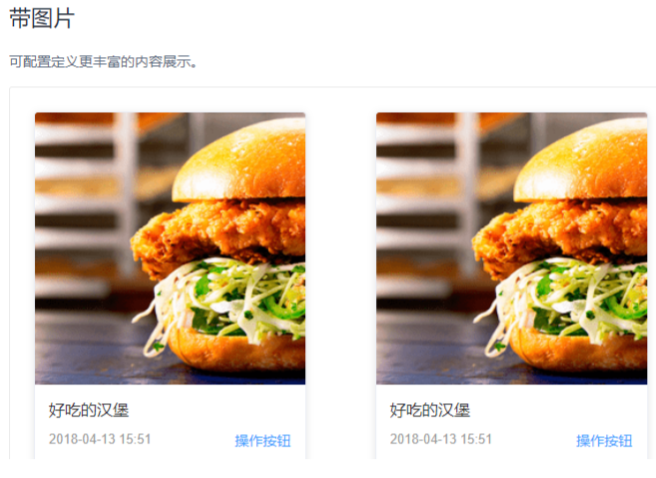1.3 前端页面说明
我的课程列表使用element 的card组件,如下:
页面布局代码如下:
<template>
<section>
<el‐row >
<el‐col :span="8" :offset=2 >
<el‐card :body‐style="{ padding: '10px' }">
<img src="/static/images/add.jpg" class="image" height="150px">
<div style="padding: 10px;">
<span>课程名称</span>
<div class="bottom clearfix">
<time class="time"></time>
<router‐link class="mui‐tab‐item" :to="{path:'/course/add/base'}">
<el‐button type="text" class="button" >新增课程</el‐button>
</router‐link>
</div>
</div>
</el‐card>
</el‐col>
<el‐col :span="8" v‐for="(course, index) in courses" :key="course.id" :offset="index > 0 ? 2 : 2">
<el‐card :body‐style="{ padding: '10px' }">
<img :src="course.pic!=null?imgUrl+course.pic:'/static/images/nonepic.jpg'" class="image" height="150px">
<div style="padding: 10px;"><span>{{course.name}}</span>
<div class="bottom clearfix">
<time class="time"></time>
<el‐button type="text" class="button" @click="handleManage(course.id)">管理课程 </el‐button>
</div>
</div>
</el‐card>
</el‐col>
<!‐‐分页‐‐>
<el‐col :span="24" class="toolbar">
<el‐pagination background layout="prev, pager, next" @currentchange="handleCurrentChange" :page‐size="size"
:total="total" :current‐page="page"
style="float:right;">
</el‐pagination>
</el‐col>
</el‐row>
</section>
</template>
<script>
import * as courseApi from '../api/course';
import utilApi from '../../../common/utils'; let sysConfig = require('@/../config/sysConfig')
export default {
data() {
return {
page:1,
size:7,
total: 0,
courses: [],
sels: [],//列表选中列
imgUrl:sysConfig.imgUrl
}
},
methods: {
//分页方法
handleCurrentChange(val) {
this.page = val;
},
//获取课程列表
getCourse() {
},
handleManage: function (id) {
console.log(id)
this.$router.push({ path: '/course/manager/'+id})
}
},
created(){
}, mounted() {
}
} </script> <style scoped>
.el‐col‐8{
width:20%
} .el‐col‐offset‐2{
margin‐left:2%
}
.time {
font‐size: 13px;
color: #999;
}
.bottom {
margin‐top: 13px;
line‐height: 12px;
}
.button {
padding: 0;
float: right;
}
.image {
width: 100%;
display: block;
}
.clearfix:before,
.clearfix:after {
display: table;
content: ""; }
.clearfix:after {
clear: both
} </style>1.4 Api接口
输入参数:
页码、每页显示个数、查询条件
输出结果类型:
QueryResponseResult<自定义类型>
在api工程创建course包,创建CourseControllerApi接口。
//查询课程列表
@ApiOperation("查询我的课程列表") public QueryResponseResult<CourseInfo> findCourseList(
int page,
int size,
CourseListRequest courseListRequest );